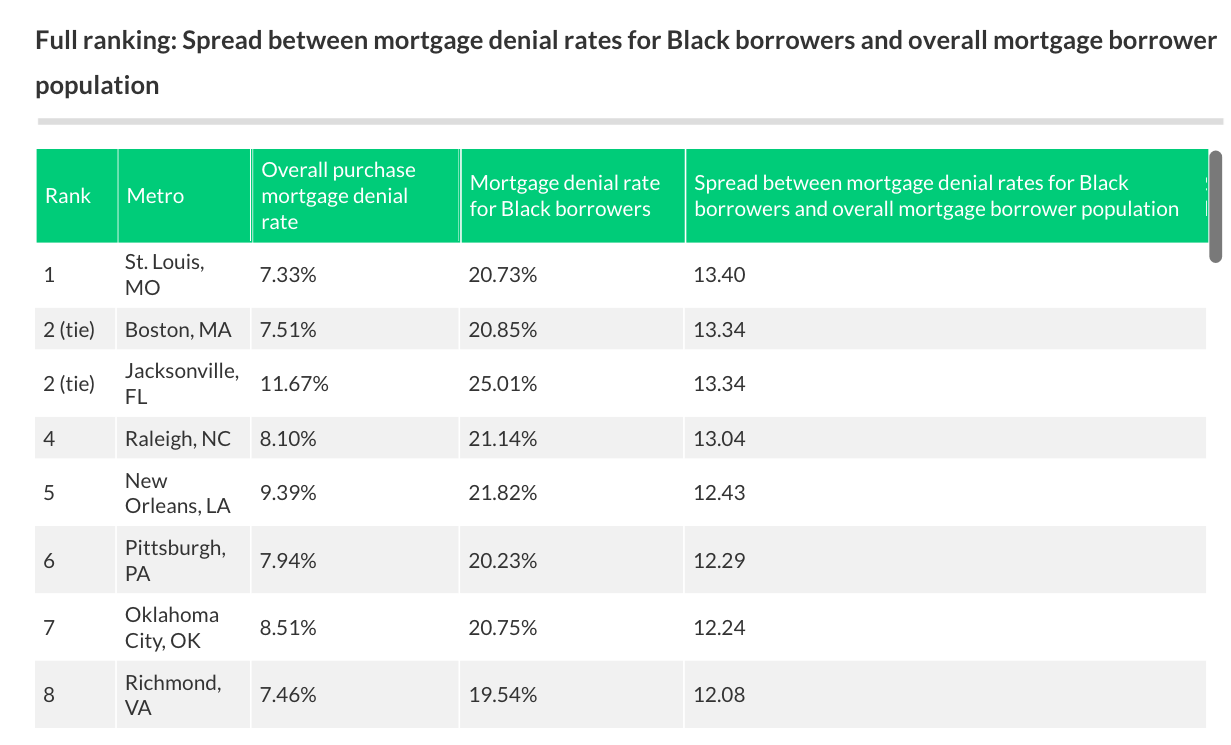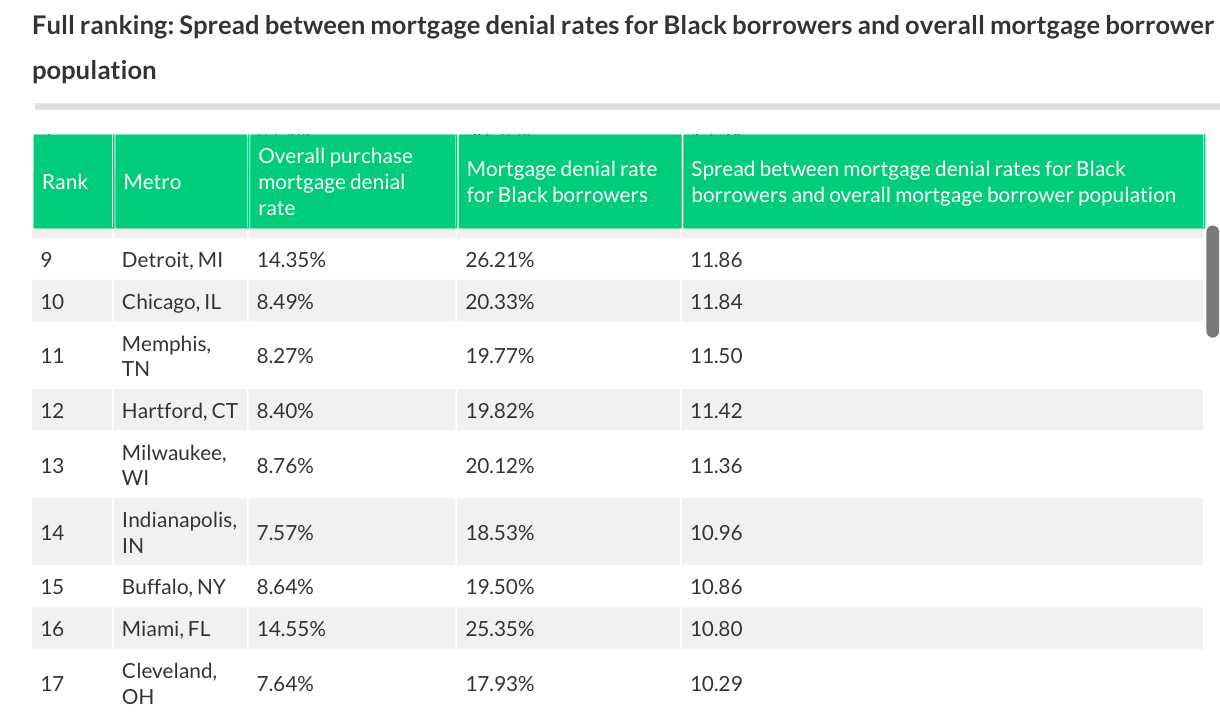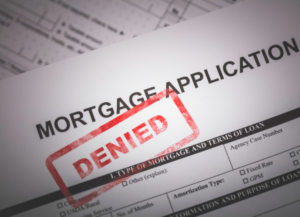While mortgages are denied for people of all races, a new LendingTree analysis of 2020 Home Mortgage Disclosure Act [1] (HMDA) data found that the share of Black homebuyers who have their mortgage requests denied is notably higher than the share of the overall population who sees the same.
One obstacle Black Americans disproportionately face is getting their mortgage requests denied by lenders. Racial barriers to homeownership in the U.S. are undeniable for many, with Black Americans often facing the most hurdles during the homebuying process.
LendingTree found that the purchase mortgage denial rate for Black homebuyers across the nation’s 50 largest metropolitan areas is an average of 9 percentage points higher than the denial rate for the overall mortgage borrower population. In other words, this means the denial rate for Black borrowers is double the denial rate for the overall borrower population.

Key findings:
- The purchase mortgage denial rate for Black homebuyers is twice as high as the denial rate for the overall mortgage borrower population in each of the nation’s 50 largest metros. On average, 18% of Black homebuyers are denied a mortgage — 9 percentage points higher than the average denial rate for the overall population of 9%.
- St. Louis, Boston and Jacksonville, Florida, see the largest percentage point differences between the denial rates for Black borrowers and the overall borrower population. Across these metros, the denial rate for Black borrowers is an average of 13.36 percentage points higher than the denial rate for the overall mortgage borrowers population.
- San Francisco, Sacramento, California, and Seattle see the smallest percentage point differences between the denial rates for Black borrowers and the overall borrower population. Though Black borrowers are more likely to be denied a mortgage in each of these metros, the average spread between their denial rate and the denial rate for the overall population is a relatively low 3.94 percentage points.
- Denial rates for Black borrowers are highest in Detroit, Miami and Jacksonville, while they’re lowest in San Francisco, Seattle and Sacramento. Across Detroit, Miami and Jacksonville, the average denial rate for Black borrowers is 25.52% — more than double the average denial rate of 12.55% across San Francisco, Seattle and Sacramento. Though they can vary by metro, denial rates for Black borrowers are higher than 10% in each of the nation’s 50 largest metros.
Metros with the largest spread between mortgage denial rates for Black borrowers and the overall borrower population:
1. St. Louis, Missouri
- Overall purchase mortgage denial rate: 7.33%
- Mortgage denial rate for Black homebuyers: 20.73%
- Spread between mortgage denial rates for Black borrowers and the overall mortgage borrower population: 13.40 percentage points
2 (tie). Boston, Massachusetts
- Overall purchase mortgage denial rate: 7.51%
- Mortgage denial rate for Black homebuyers: 20.85%
- Spread between mortgage denial rates for Black borrowers and the overall mortgage borrower population: 13.34 percentage points
2 (tie). Jacksonville, Florida
- Overall purchase mortgage denial rate: 11.67%
- Mortgage denial rate for Black homebuyers: 25.01%
- Spread between mortgage denial rates for Black borrowers and the overall mortgage borrower population: 13.34 percentage points

Metros with the smallest spread between mortgage denial rates for Black borrowers and the overall borrower population:
1. San Francisco, California
- Overall purchase mortgage denial rate: 9.44%
- Mortgage denial rate for Black homebuyers: 11.79%
- Spread between mortgage denial rates for Black borrowers and the overall mortgage borrower population: 2.35 percentage points
2. Sacramento, California
- Overall purchase mortgage denial rate: 8.48%
- Mortgage denial rate for Black homebuyers: 13.12%
- Spread between mortgage denial rates for Black borrowers and the overall mortgage borrower population: 4.64 percentage points
3. Seattle, Washington
- Overall purchase mortgage denial rate: 7.91%
- Mortgage denial rate for Black homebuyers: 12.74%
- Spread between mortgage denial rates for Black borrowers and the overall mortgage borrower population: 4.83 percentage points
Why are denial rates higher for Black borrowers?
The exact reasons behind this disparity can be difficult to pin down. But various factors likely contribute to Black borrowers’ disproportionately high denial rates.
For example, Black Americans tend to have lower incomes and less household wealth than members of other racial groups. Because lenders usually look at factors like a person’s income when determining whether to issue a loan, earning less money can make getting approved for a mortgage more difficult.
Further, the legacies of historical policies meant to disenfranchise Black homebuyers, like illegal “redlining,” and other discriminatory practices —like offering a borrower worse terms on their loan because of their race— also likely contribute to the disproportionately high denial rates for Black borrowers.
To read the full report, including more charts and methodology, click here [1].
